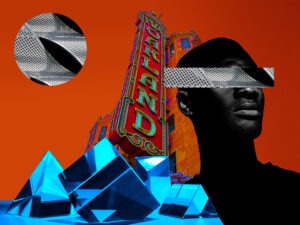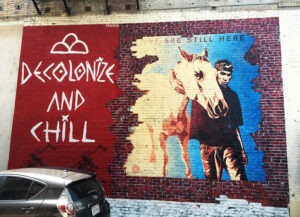
September 28, 2019; Washington Post
George Mason University (GMU), founded in 1972, may not be the most famous university in the nation’s capital region. But with 37,000 students, it is the largest and thus highly prominent. Other schools, notes Lauren Lumpkin in the Washington Post—such as Georgetown University, the University of Virginia, and the College of William & Mary—have taken action to reckon with their past complicity in slavery. Now GMU, prodded by its own students and faculty, has commissioned a memorial regarding the slave history of its namesake, which will open in 2021.
GMU may be a relatively new school, but it still has a strong connection to slavery. Not only is it named after George Mason IV—who, in addition to helping draft the US Constitution and being a co-author of the Virginia Declaration of Rights, owned over 100 slaves—but near its main campus lies Gunston Hall, now a museum and once Mason’s plantation home.
“Students started questioning Mason’s past in 2016 after reading the will he wrote for his children in 1773,” Lumpkin explains. This in turn led two faculty members, Ben Carton and Wendi Manuel-Scott, to apply for a summer research grant to hire five university students to conduct archival research.
As a result, in the summer of 2017, five George Mason students—Alexis Bracey, Elizabeth Perez-Garcia, Farhaj Murshed, Kye Farrow, and Ayman Fatima—worked together to unearth details about the lives of some of Mason’s slaves. Much of what they found is now available online on a web portal called the Enslaved Children of George Mason project.
Of Mason’s more than 100 slaves, the student research team found that half were under the age of 16. Carton notes that in his will, Mason “bequeathed enslaved people, often by age, grade to his children. He never emancipated a single enslaved individual.”
Sign up for our free newsletters
Subscribe to NPQ's newsletters to have our top stories delivered directly to your inbox.
By signing up, you agree to our privacy policy and terms of use, and to receive messages from NPQ and our partners.
One of the slaves that students identified through their historical research was Penny, who “was around 10 years old when she was ripped from her family in Maryland and displaced to Gunston Hall, the stately, brick mansion in the middle of a 5,550-acre slave labor camp owned and operated by George Mason IV.” Manuel-Scott explained to Lumpkin, “She was about the same age as Mason’s daughter. She would have been an aide. Bringing food to Ann [Mason], emptying her [urine] pot, helping to clean.”
Now, based on the research the students conducted, a memorial is being constructed on campus. It will include a bronze statue of George Mason and silhouettes of Penny and an adult ”manservant” named James—or perhaps more accurately, Jammy. Jammy, according to Fatima, carried George Mason around his home (Mason suffered from gout) and traveled with him to such places as Williamsburg and Philadelphia.
There are no recorded images of either Penny or “James,” which is why the memorial contains silhouettes of the slaves identified by the student research instead. As George Oberle, GMU’s history librarian, explains, “Part of the idea of the silhouettes is to force people to look through this lens and try to imagine yourselves in Penny’s shoes or James’s shoes.” Lumpkin adds, “Penny’s and James’s figures will be carved from large panels inscribed with the names of the men, women, and children whom Mason enslaved.”
The structure is designed to be interactive, Oberle tells Lumpkin. The memorial will include openings in the “Penny Panel” and “James Panel” for people to look through and see the rest of the memorial. Bricks on the ground will contain messages to encourage reflection, such as one that says, “Consider how slavery and freedom coexisted in America.”
Farrow, now 22, hopes that the research that he and his fellow students conducted will spark conversations about freedom in the United States. “I was never one to say we need to change the name of the university because of this,” Farrow tells Lumpkin. “I think it’s just something we need to learn from. It’s about embracing the past as opposed to distancing ourselves from it.”
Manuel-Scott adds, “We are in a time where students are compelling us to courageously consider the relationship between the present and the past.”—Steve Dubb












